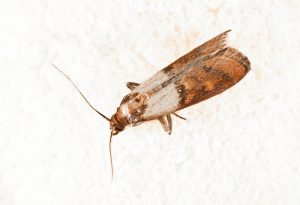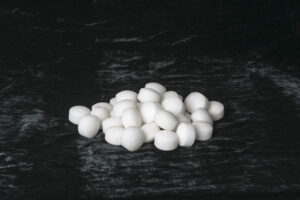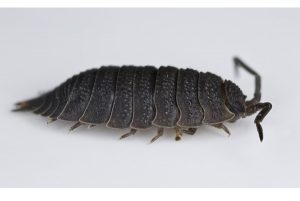
How do Ant Baits work?
It is important for those carrying out DIY pest control to know how ant baits work, so they can choose the correct ant bait for their particular situation.
Ant baits – Basic Information
What goes into an ant bait?
Ant baits consist of food materials attractive to ants (you want them to find and eat the bait) and a slow acting insecticide (they need to take it back to the nest and spread it around before it starts to take effect).
Types of ant bait
There are a variety of ant baits available. Ant baits are generally grouped by the type of ants they target – some target sweet feeding ants, some target protein / oil feeding ants and some target both. (See ant feeding preferences below for more information).
Ant baits also come in a variety of formats – liquid, gel and granular baits. Typically, liquid and gel baits tend to target sweet feeding species and are more commonly used indoors, whereas granular baits tend to target protein and oil feeding species and are generally used outdoors.
The principle of ant baiting
The idea around ant baiting is that you use the ants natural foraging behaviour against them. There is no need to find the nest (which can be difficult), all you need to do is place an attractive ant bait near foraging ants and they take the bait back to the nest dooming the colony.
Whereas it is desirable to kill all the ants as quickly as possible, the most important element of ant baiting is that it must kill the queen or queens in the colony. If the queens are dead, the are no more eggs being laid and so the colony will die (even if some workers survive).
How quickly do ant baits work?
The reason ant baits use a slow acting insecticide is that you want the foraging ants to take the bait back to the nest and spread it around the colony, particularly to the queen, before it starts to take effect and they realise something is wrong.
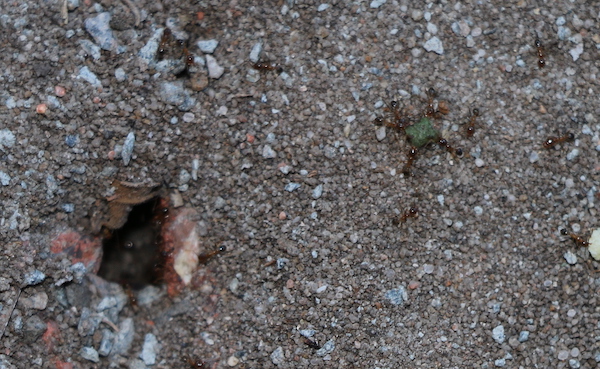
Providing enough ant bait is applied for the size of the nest being treated, the ant bait will be spread within the colony within 24-48 hours. The speed of kill is influenced by the size of the colony and how much bait each individual ant eats. Typically, you can see a big reduction in ant numbers within 1-3 days, with colony control normally confirmed within a week.
Factors affecting the performance of ant baits
Ant identification
The most important first step in carrying out a successful ant treatment is to correctly identify the species present. This then influences the choice of bait. Check out our blog articles for identification tips for the common black ants and brown ants.
Ant feeding preferences
Ant species can be grouped into sweet feeders, protein/oil feeders and generalists (which eat a bit of everything). It’s obviously important to choose an ant bait that is going to be attractive to the species you are trying to control. Correctly identifying the species will help, however some ant species will change their food preferences through the year, depending on the needs of the colony.
Once you have selected what you believe to be the best ant bait, place a small amount near a foraging trail and see if the ants are attracted to the bait and take it back to the nest. If they don’t find it and start taking it within an hour, then you will probably have to try a different bait.
How much bait to use?
The bigger the nest, the more ant bait is required to get control. Unfortunately, it can be quite difficult to estimate the size of the nest. A good starting point is to apply enough bait such that it takes at least 2 hours for the ants to take all the bait. However, if the ant activity has shown no signs of decreasing within 2-3 days, further applications should be made.
One of the key challenges is that some ant species, especially those that take over the yard, actually have multiple nests, containing multiple queens, which are all part of the same colony. These colonies can spread over entire neighbourhoods. In these circumstances, ant baits will control or supress ant populations for a period of months, but the ants will then re-invade from surrounding areas. In such situations, regular bait applications will be necessary to keep ant numbers down.
Does the type of insecticide used make a difference?
Ant baits not only varying in the food attractants in the formulation but also in the insecticide used in the bait. Slow acting insecticides are essential and often the slower the better, as it lessens the chance of the ants detecting something is wrong before the bait has a chance to be spread throughout the colony. This can sometimes be seen with boron (borax) based baits, when ants readily forage on the bait initially but then stop feeding on it a day or so later. If they haven’t taken enough of the bait initially, the colony will survive.
In addition to more traditional insecticides, there are a group of “insecticides” called insect growth regulators (IGRs). These don’t kill the adult ants but sterilise the queens and kill the larvae when they try to moult. These IGRs are very effective in eliminating ant colonies but may take several weeks to have their effect.
Which ant bait should you choose?
Identifying the ant species present and working out its feeding preferences are a good first step. Alternatively, broadly speaking, black ants inside the house are more likely to be sweet feeders and so ant liquids or gels are probably the best choice. However, for brown ants and outdoor ant problems, which tend to be protein/oil feeders or generalists, a protein / oil-based bait would be the best starting point.
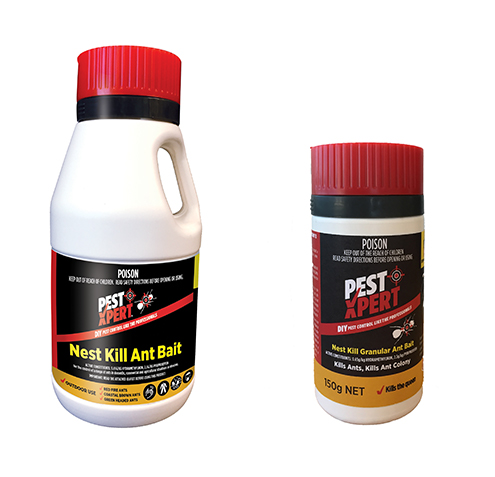
PestXpert Nest Kill Ant bait has been designed as a high performing, broad spectrum ant bait. Utilising ant bait technology developed in government ant control programs, PestXpert Nest Kill contains two different food granules, a protein / sugar-based granule and an oil based granule, to maximise the number of species finding it attractive. It also contains two different insecticides, a traditional slow acting insecticide (hydramethylnon) and an IGR (pyriproxyfen) to ensure optimal performance. As a granular bait it is ideal for treating outdoor ant species that cause problems in lawns and pavers, such as the coastal brown ant, the green-head ant and the fire ant (in SE Qld).

